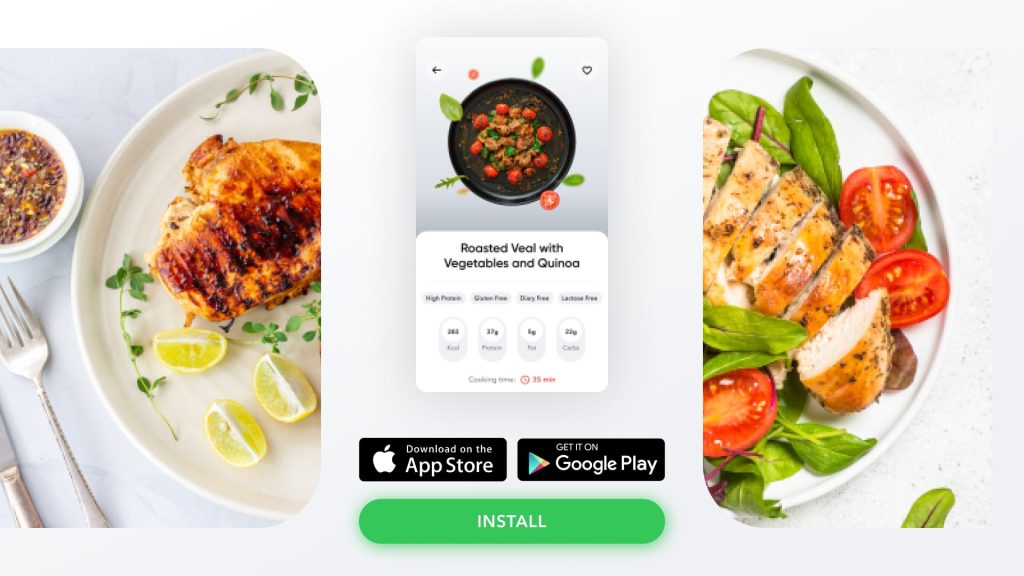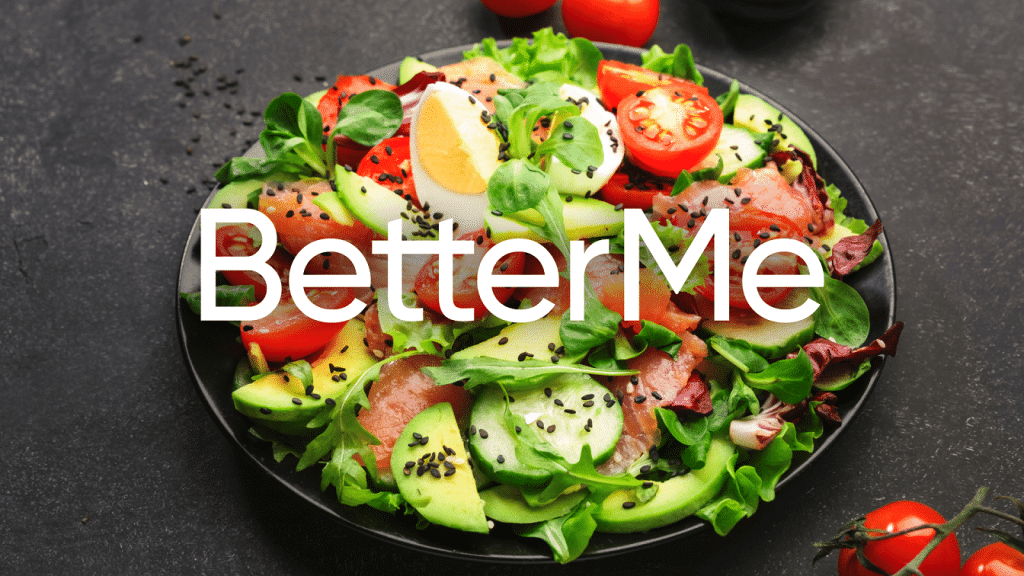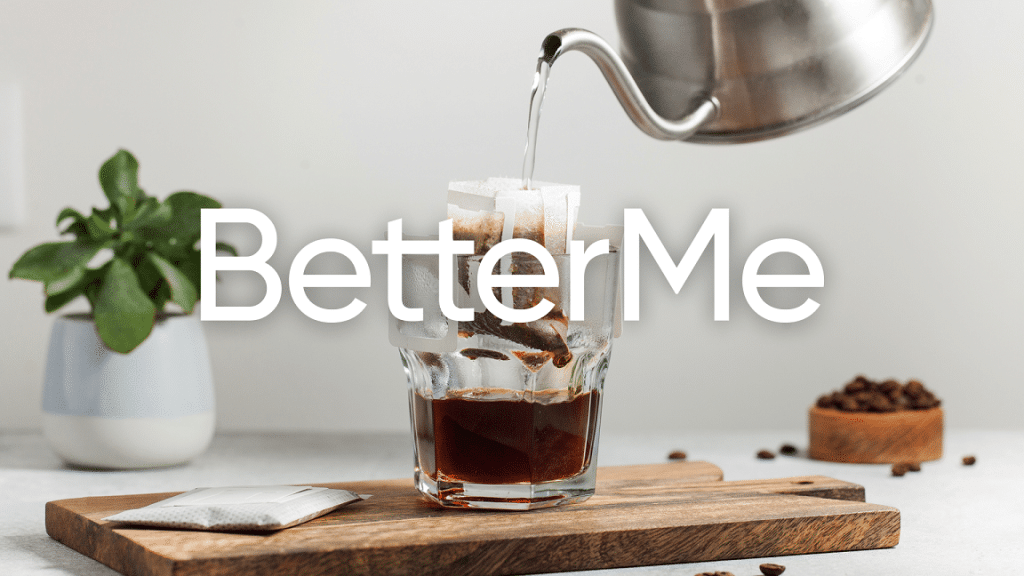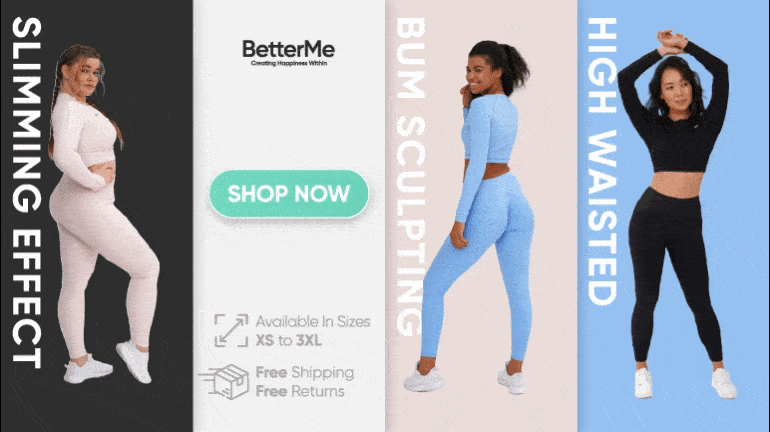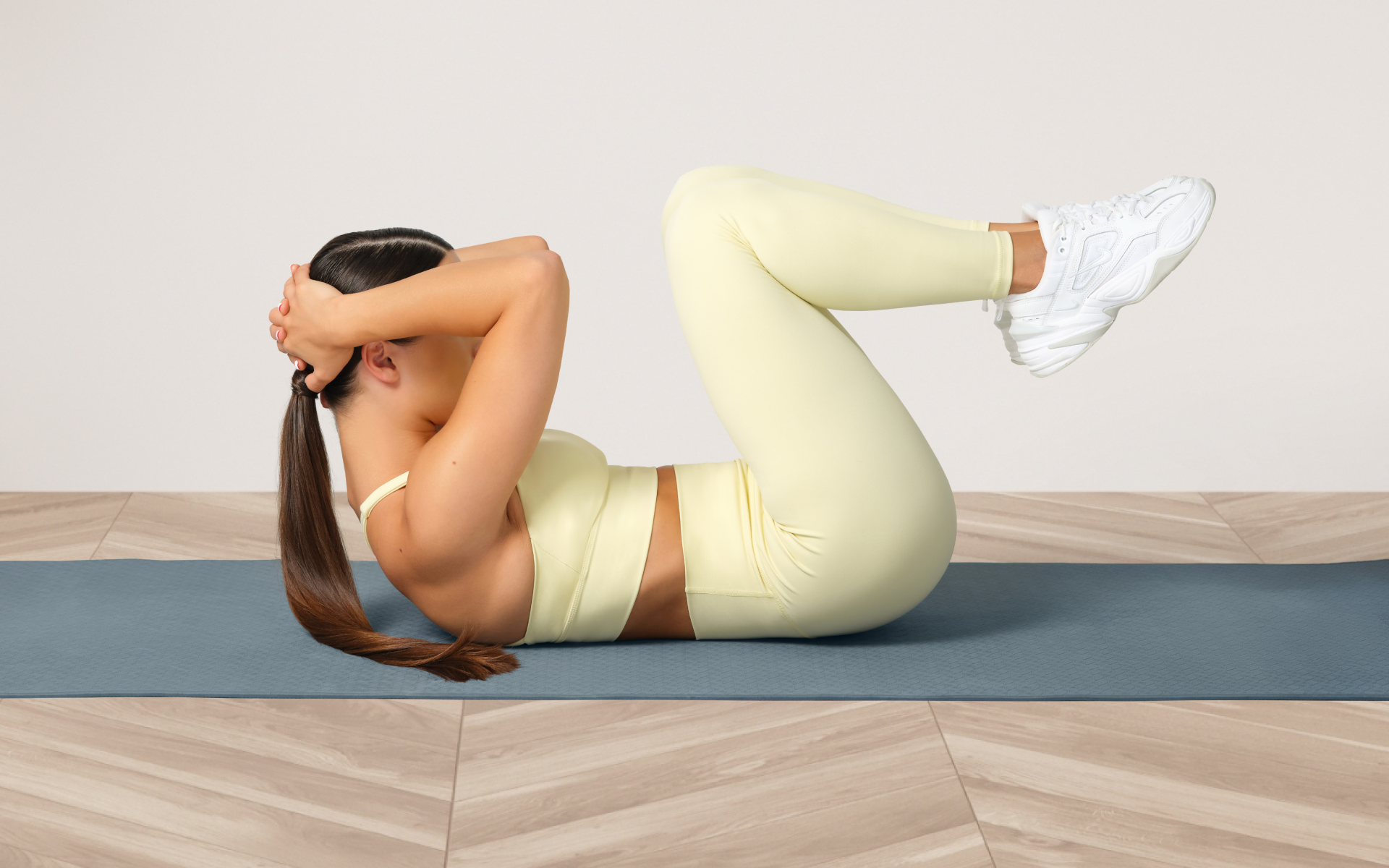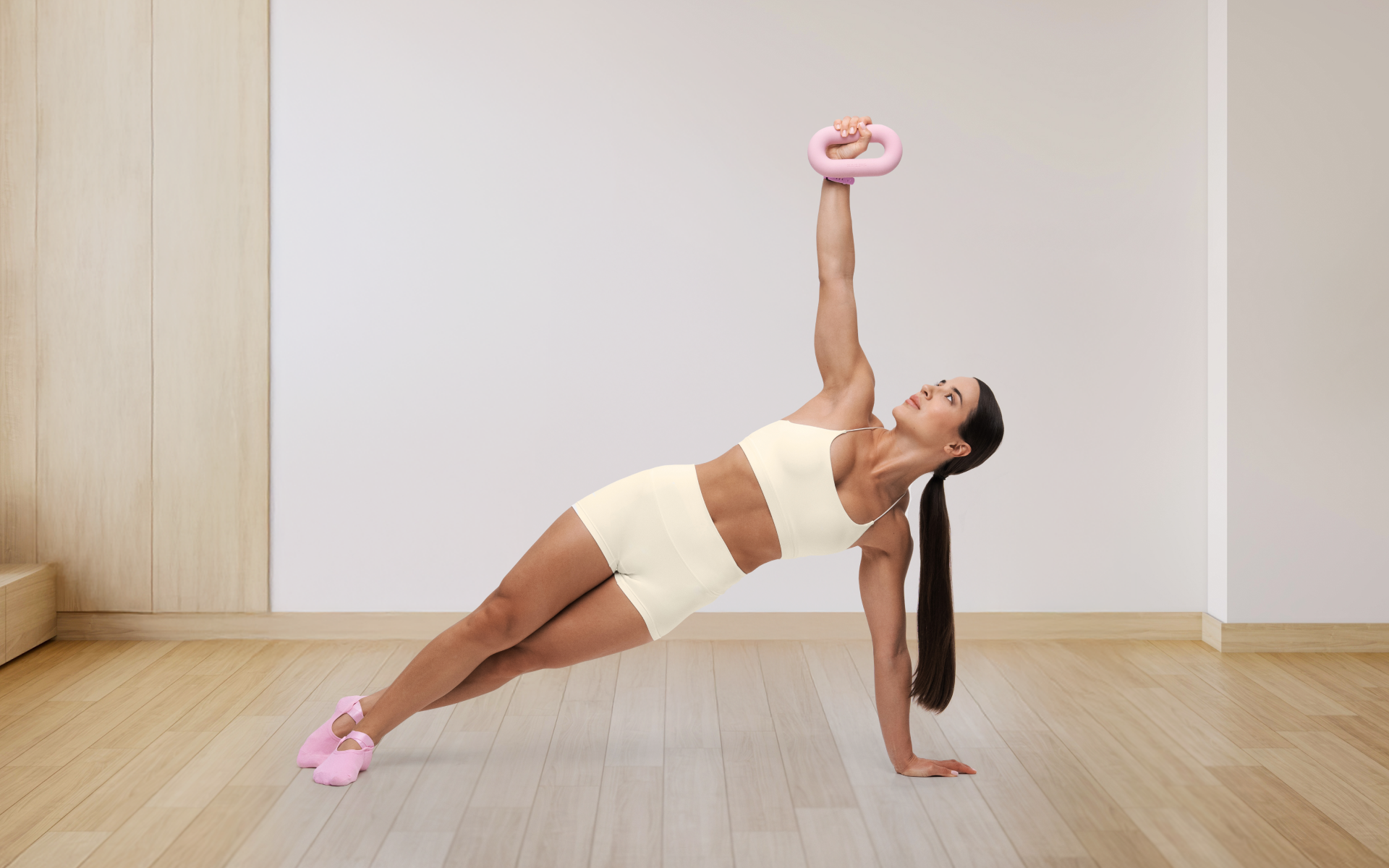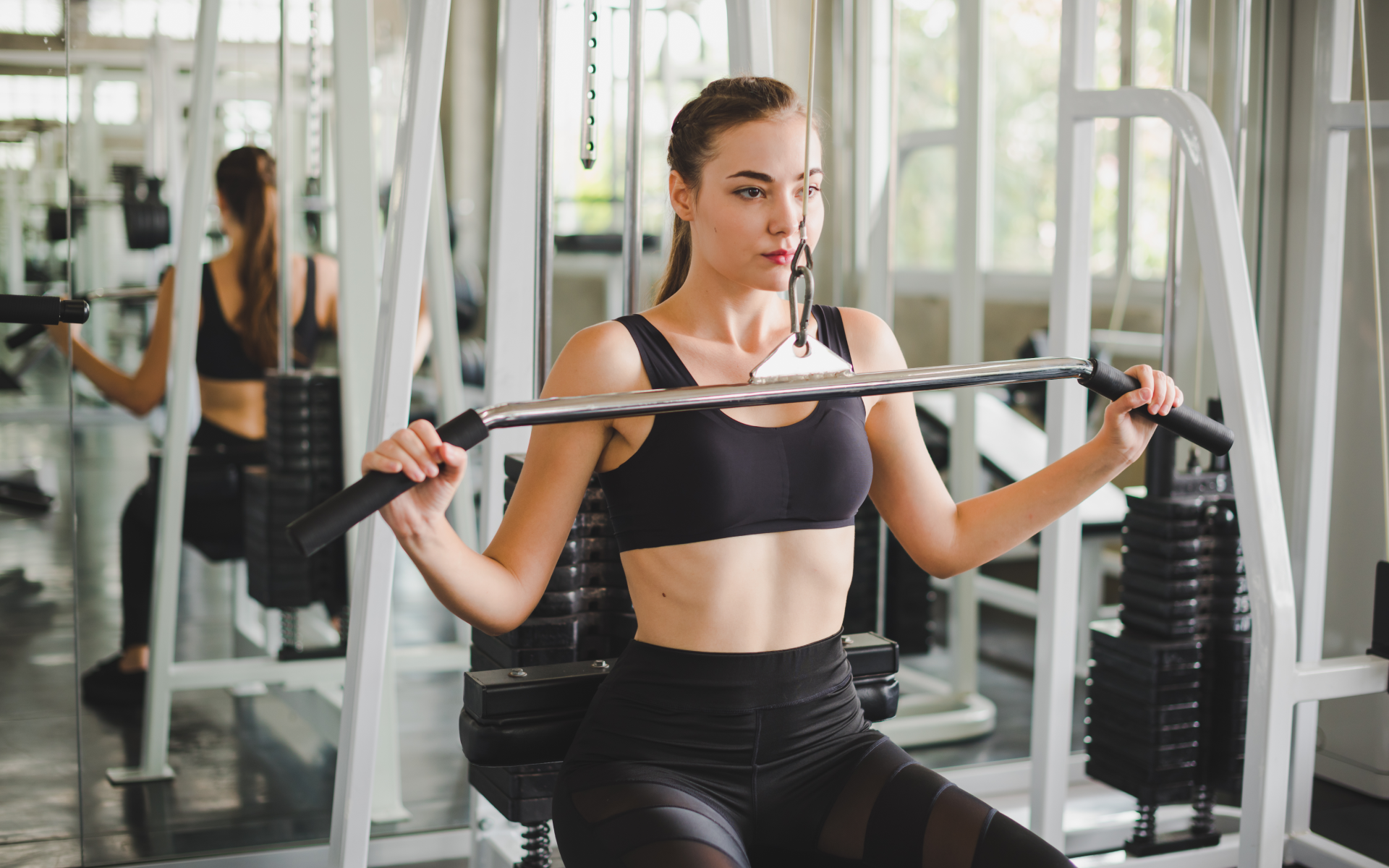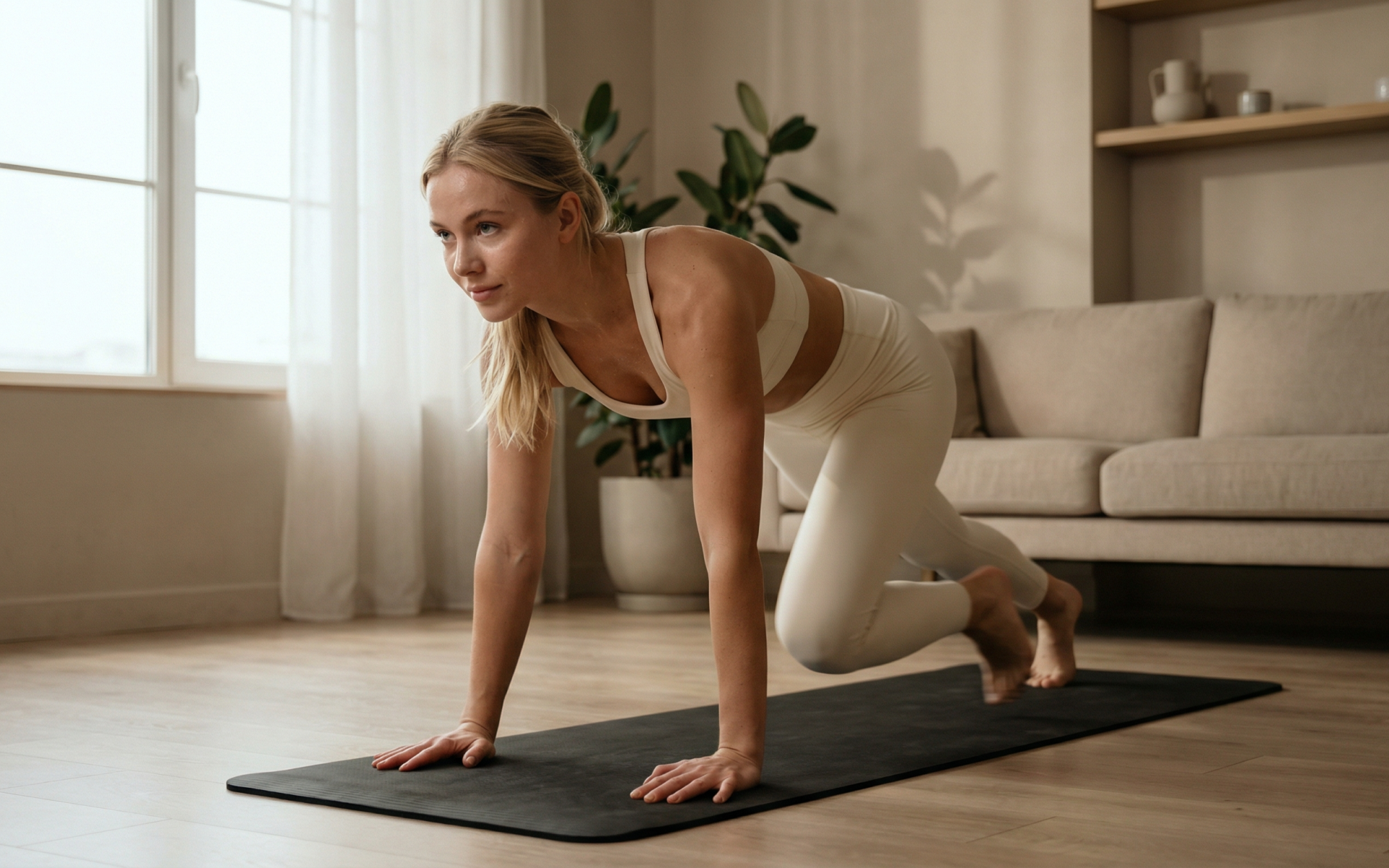A shred workout is designed to make you lose body fat (and, in some cases, excess water weight), so your muscles are as defined as possible. It’s different from bulking, in which you focus on building muscle. Shred workouts often involve low weights and high reps with moderate to very high cardio activity like running, biking, or swimming.
Get your personalized
meal plan!
Should You Lose Fat Or Build Muscle First?
Whether or not you go for a shred workout depends on which side of the debate you’re on.
Lose Fat First
The general consensus is that people should focus on losing weight first because this can improve certain aspects of their health. This includes:
Hormonal Balance
Having a proper hormonal balance can help improve energy levels. Many people are sluggish due to having too much cortisol, which is released during stressful times, causing them to gain weight (4).
People with high cortisol often feel fatigued and crave sugar and fatty foods. They also tend to develop extra abdominal fat around the waist, which can lead to insulin resistance (10).
When someone has insulin resistance, they have trouble losing weight because their body won’t properly respond to insulin. However, by restricting their food intake, they can regulate their cortisol production and burn off excess body fat more easily.
Improved Energy
Many people are unable to lose weight due to being very fatigued. This is often because their thyroid levels are abnormally low, which also lowers their metabolic rate (13). By losing the first few pounds of fat on the body, people can regain some of their energy and begin building more muscle mass.
Read More: Belly Fat Burning Juice Recipes: Do They Really Lead To Lasting Results?
Reduced Stress On Joints
Being overweight makes it harder to exercise. It can be hard on the joints and cause pain. Once someone loses a few pounds of fat, they will feel better and have less stress on their joints when exercising or performing daily tasks.
Faster Visible Results
This is why many experts recommend that people lose weight before building muscle. Building muscle takes time, and it isn’t easy to bulk up overnight like some people think it is. Most people should start by losing the first 10-15 pounds because this will give them visible results much faster than if they started with building muscle mass.
Build Muscle First
Some experts think that it’s better to build muscle mass first. They say that this helps improve one’s metabolism and prevents muscle catabolism (when muscles are used for energy instead of fat stores) (2). This is especially helpful for people over the age of 40, as they need all the help they can get when building lean muscle mass.
Build Muscle And Lose Fat At The Same Time
Amidst all fat loss vs. muscle building debate, there is a general consensus throughout the fitness community about how people should be prioritizing their workouts. Most people believe that everyone should focus on both strength training and cardio to begin losing fat quickly (12). As soon as someone loses 10 pounds of fats or so, then they can transition into more resistance training using weights to bulk up.
According to the American Council Exercise, the best shredding exercises involve high-intensity intervals for preserving muscle tissue while you burn calories (6). Ideally, you should aim for bursts of exercise that help you reach 80 to 90 percent of your maximum heart rate.
How To Get Shredded Fast?
Your shredding workouts should include these two elements:
Cardio Activity
Cardio activity, which burns calories and helps with weight loss, is a must when it comes to getting ripped fast. Almost every shredding workout includes some form of cardio training, whether it’s HIIT drills or going for a long run.
Circuit Training
You should avoid long cardio sessions because they can lead to muscle tissue catabolism (3). Instead, incorporate circuit training into your workout for an efficient strength-building session that works all your major muscles without stressing them too much.
Circuit training is a popular way to get shredded because it combines strength and cardio. In this type of workout program, you move quickly from one exercise to the next with minimal rest. Between each station is a set time limit that forces you to work until failure.
This approach is ideal if you’re looking to build muscle and burn fat at the same time because it builds muscular endurance as well as cardiovascular stamina.
When it comes to weight loss, progress is made by inches, not miles, so it’s much harder to track and a lot easier to give up. BetterMe app is your personal trainer, nutritionist, and support system all in one. Start using our app to stay on track and hold yourself accountable!
The Shredding Diet
When it comes to a shredding diet plan, the first thing most people need is a clear idea of what they’re working with regarding their current nutrition habits. There are some general principles that everyone needs to follow regarding healthy eating for any successful weight loss routine. These include:
Eat Plenty Of Lean Protein
Lean protein is your best ally when it comes to shredding. Because muscle growth depends on amino acids, you need to eat lean sources of protein every 3-5 hours (8).
Some of the best protein sources for your shredding meal plan are:
- Poultry including turkey, chicken, and quail
- Eggs
- Fish and seafood including tuna, halibut, shellfish, cod, flounder, salmon, bass
- Lean beef including the eye of round steak, top sirloin steak
- Protein powder
Go Low Carb (Focus On Complex Carbs)
A low-carb diet is best for weight loss. Only include a few complex carbs in your meals as these take longer to digest and will keep you fuller for longer (5).
The best complex carbs for a shredding diet include:
- Oatmeal
- Whole-grain bread
- Beans
- Some whole grains such as quinoa or millet
- Vegetables such as red peppers, broccoli, kale, zucchini, eggplant, and spinach
Moderate Your Consumption Of Fats
Fats aren’t usually considered for weight loss because they are calorie-dense. However, some fatty foods are necessary if you want to make your shredding diet plan successful. Some unsaturated fats can actually help with healthy digestion and nutrient absorption, which aids muscle growth after a workout (1).
The best fat sources for shredding include:
- Nuts and seeds including flaxseed, walnuts, and chia seeds
- Olive oil and other vegetable oils such as corn oil or safflower oil
- Avocados
Take Plenty Of Water
It can be very easy to confuse your body’s signal for feeling hungry with the need for more fluids. Over time, dehydration can impede muscle growth and recovery because it reduces performance levels, so drink plenty of water throughout the day.
Read More: 14-Day Workout Challenge To Get Shredded In No Time!
Expert Tips For Getting Shredded Fast
In addition to following a strict shredding diet and exercise plan, there are a few things you can do to prevent water retention, reduce bloat, lose weight, and make your muscles more visible.
Reduce Sodium Intake
A high sodium intake from processed foods, restaurant dishes, and canned goods can contribute to water retention, which makes your clothes feel tighter (9). Keep a food diary for a week to know where the saltiest foods are coming from and cut back on these to prevent water retention.
Eliminate Artificial Sweeteners
Artificial sweeteners create an insulin response that encourages the body to retain water and store fat.
Eat Fibrous Vegetables Carefully
Fibrous vegetables such as broccoli, cauliflower, cabbage, Brussels sprouts, and turnips are great to eat when you’re trying to lose weight because they keep you feeling full for longer. However, their high fiber content can cause bloating and abdominal discomfort (11). You can eat these foods, but leafy greens are a better option.
Consume Fat-Burning Foods
Certain foods are known for spurring the production of fat-burning hormones that can help you lose water weight.
These include:
- Green tea
- Coffee
- Grapefruit juice
- Cinnamon
- Avocados
Eat Foods With Potassium
Potassium-rich foods are essential for healthy muscle function and protein synthesis, but they can also help lower blood pressure, which reduces water weight on the scale (7).
Some potassium-rich foods include:
- Bananas
- Sweet potatoes or yams
- Spinach
- Tomatoes
- Fatty fish including salmon, tuna, trout, and mackerel
The Bottom Line
A shredding workout is designed to make you lose body fat (and, in some cases, excess water weight), so your muscles are as defined and toned as possible. The shredding workout focuses on short workouts that help you maintain lean muscle mass while losing unwanted pounds.
DISCLAIMER:
This article is intended for general informational purposes only and does not address individual circumstances. It is not a substitute for professional advice or help and should not be relied on to make decisions of any kind. Any action you take upon the information presented in this article is strictly at your own risk and responsibility!
SOURCES:
- A Little Fat Helps the Vegetables Go Down (2004, webmd.com)
- Anabolic and catabolic pathways regulating skeletal muscle mass (2011, nih.gov)
- Are you doing too much cardio? (2018, hackensackmeridianhealth.org)
- Beware High Levels of Cortisol, the Stress Hormone (2017, premierhealth.com)
- Effects of carbohydrates on satiety: differences between liquid and solid food (2011, nih.gov)
- Fall Fat Loss: HIIT Workout (2017, acefitness.org)
- Potassium intake, skeletal muscle mass, and effect modification by sex: data from the 2008-2011 KNHANES (2020, biomedcentral.com)
- Protein timing and its effects in muscular hypertrophy and strength in individuals engaged in weight-training (2012, nih.gov)
- Sodium Intake and Hypertension (2019, nih.gov)
- Stress and Eating Behaviors (2014, nih.gov)
- Systematic review: the role of different types of fibre in the treatment of irritable bowel syndrome (2004, nih.gov)
- The effect of 12 weeks of aerobic, resistance, or combination exercise training on cardiovascular risk factors in the overweight and obese in a randomized trial (2012, biomedcentral.com)
- Thyroid Hormone Regulation of Metabolism (2014, nih.gov)




